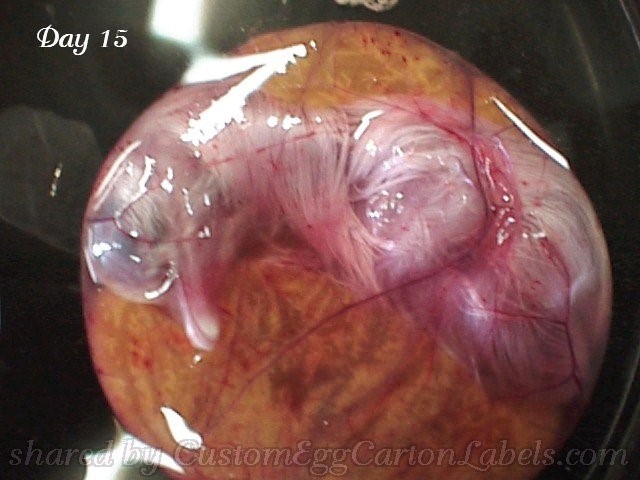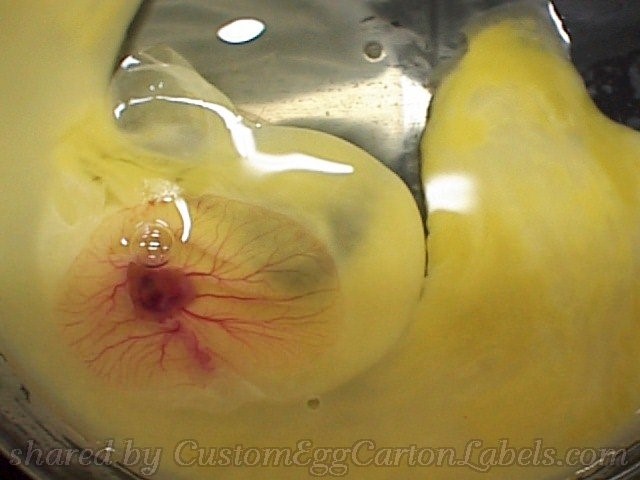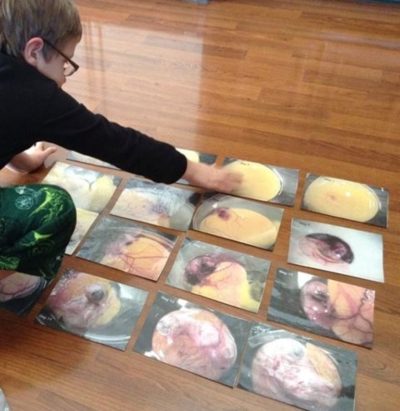All ages enjoy learning about the miracle of how a chick develops inside an egg. It is truly a small world! Once the egg is fertilized, and the hen lays the egg, it takes 21 days for an embryo to develop into a chick. If you want to get technical and count the developmental process before the egg is laid, then it would be 22 days.

This lab offers something for students of all ages. Preschool and early elementary students will understand the development of a chick just by using the free, printable Embryonic Development Cards. Older students can learn the details about the four membranes and their importance as the chick develops.
Lab Supplies
- Print the FREE Embryonic Development Cards
- Laminate Cards for durability
If you have finished the Anatomy of an Eggshell and the Anatomy of an Egg, then you already understand how important the shell is to the chick’s development. The tiny pores on the shell allows for air and moisture to pass through. In addition, the egg is coated in a bloom or cuticle which stops bacteria from seeping through the pores to the chick. Important stuff!
Four Special Membranes
Information for Older Students
The avian embryo has no attachment to it’s mother. Unlike humans, there is no umbilical cord so everything the chick needs must be contained within the egg. The development of a chick is dependent upon four special membranes.

- The Yolk Sac – This special sac surrounds the yolk and turns the yolk into food for the embryo. When the chick hatches, the unused yolk left inside this membrane is drawn into the chick’s abdomen and will feed the chick for several days after hatching.
- The Amnion – The Amnion is a sac that fills with fluid around the fragile embryo and creates an environment that absorbs shock.
- The Allantois – The Allantois is a membrane that develops an extensive circulatory system around the embryo. It transports oxygen, removes carbon dioxide, as well as the chick’s wastes. The Allantois also provides a way for the chick to digest the calcium obtained from the shell.
- The Chorion – The chorion attaches the membrane of the inner shell to the Allantois so that the Allantois can carry out all its functions.
Free Embryonic Developmental Cards

Print the FREE Embryonic Developmental Cards below. They are numbered so that younger students can use the numbers to easily put them in order. Laminating is not necessary, but highly suggested. I could not live without my laminator, like a desk, it completes the homeschool room!
The cards show the 21 day story. Pictures can speak a thousand words!
Additional Learning Resources
This post contains affiliate links. If you click through and make a purchase, we will earn a commission, at no additional cost to you. Commissions help keep Moving Mountains Daily up and running. Read our full disclosure here.
Would you like to learn to How to Speak Chicken? We found this book fascinating even though we don’t own chickens.
Let’s Hatch Chicks introduces children to the life cycle and hatching of chickens. I use this particular book along with the development cards.
I could not live without my laminator. It makes materials last longer and also creates pages where students can use dry erase markers. It saved paper when Andrew was learning to write. The Crenova with paper cutter is my favorite.
We love comments and encouragement. Just remember: This is a safe site for children. If comments are not tastefully stated, they will disappear in a “POOF”!







marcie says
Very interesting and informative. Thanks so much!
Danielle Warmuth says
You are welcome!